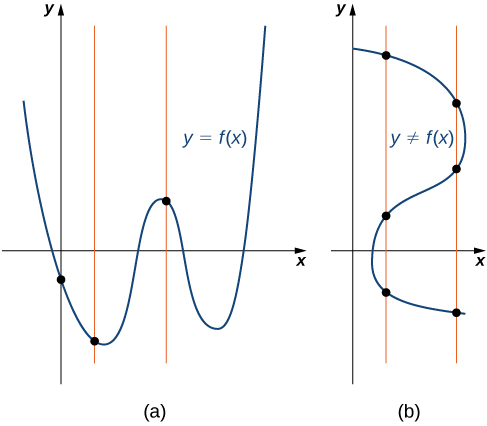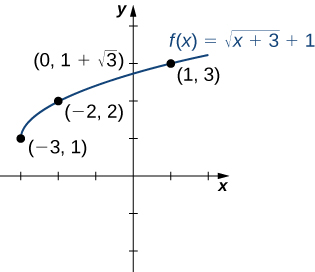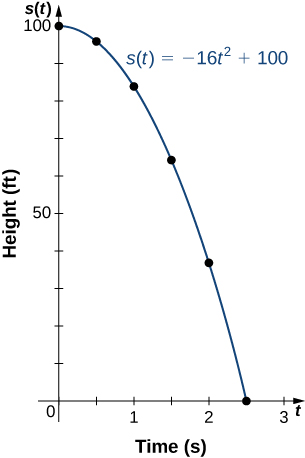| << Chapter < Page | Chapter >> Page > |
When creating a table of inputs and outputs, we typically check to determine whether zero is an output. Those values of where are called the zeros of a function . For example, the zeros of are The zeros determine where the graph of intersects the -axis, which gives us more information about the shape of the graph of the function. The graph of a function may never intersect the x -axis, or it may intersect multiple (or even infinitely many) times.
Another point of interest is the -intercept, if it exists. The -intercept is given by
Since a function has exactly one output for each input, the graph of a function can have, at most, one -intercept. If is in the domain of a function then has exactly one -intercept. If is not in the domain of then has no -intercept. Similarly, for any real number if is in the domain of there is exactly one output and the line intersects the graph of exactly once. On the other hand, if is not in the domain of is not defined and the line does not intersect the graph of This property is summarized in the vertical line test .
Given a function every vertical line that may be drawn intersects the graph of no more than once. If any vertical line intersects a set of points more than once, the set of points does not represent a function.
We can use this test to determine whether a set of plotted points represents the graph of a function ( [link] ).

Consider the function

Consider the function
Making use of the table and knowing that, since the function is a square root, the graph of should be similar to the graph of we sketch the graph ( [link] ).

If a ball is dropped from a height of ft, its height at time is given by the function where is measured in feet and is measured in seconds. The domain is restricted to the interval where is the time when the ball is dropped and is the time when the ball hits the ground.
Since the ball hits the ground when the domain of this function is the interval


Notification Switch
Would you like to follow the 'Calculus volume 1' conversation and receive update notifications?